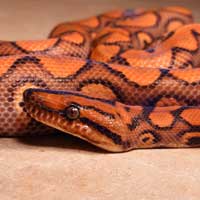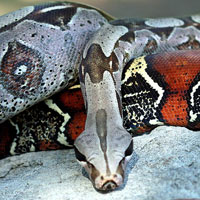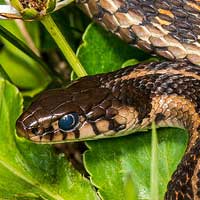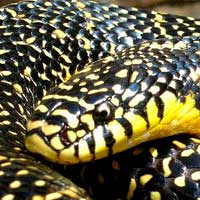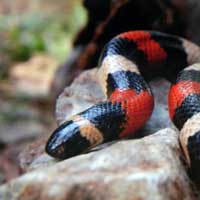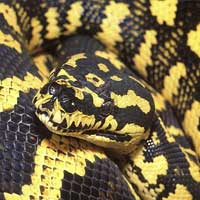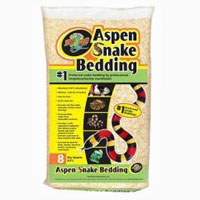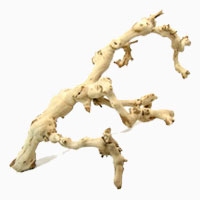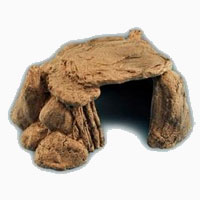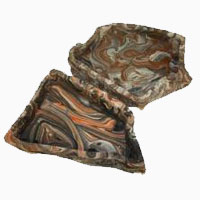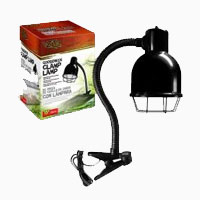Eastern Kingsnake
Scientific Name: Lampropeltis Getula Getula
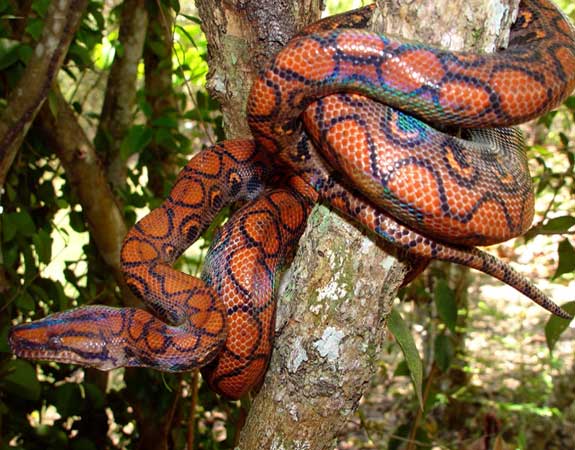
Share this Post
This snake, which is harmless, is one of the many species of the king snakes; the eastern kingsnakes are common in Mexican regions. These snakes are also common in areas such as Louisiana, Maryland, South Carolina and Arkansas. It has a unique skin pattern and many people believe that it hunts venomous snakes in order to protect themselves from dying. People also refer to the eastern kingsnake as the common kingsnake, the chain kingsnake, black moccasin, cow sucker, oak leaf rattler, rattlesnake pilot, thunderbolt and master snake. Sometimes people refer to it as horse racer, though it does not have anything in common with the horse. The average length of an adult eastern kingsnake ranges between thirty nine to seventy eight inches. The skins of these snakes are either glossy black, dark brown or blue-black in color. Besides the unique colors, these snakes have between twenty-three and fifty-two white rings on their skin; the white rings and the shine on their skin are what make them distinctive among all the other kingsnakes.
Eastern Kingsnakes Are Beautiful Creatures
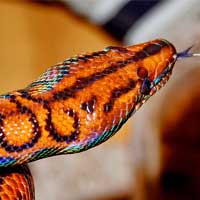
Facts About Eastern Kingsnakes
Geographic Location
Generally, individuals from the Coastal Plain have wide bands while those from the mountains may have very thin bands or be nearly completely black. Eastern kingsnakes have a short stout head and small beady eyes. They have an undivided anal plate. Kingsnakes have one of the largest geographic ranges of any North American snake species and their coloration is variable across their range. Although kingsnakes from most areas of Georgia and South Carolina are of the Eastern subspecies (Lampropeltis getula getula), two other subspecies approach our region. The black kingsnake (L. g. nigra), which lacks yellow or white crossbands, is found in the north-central United States, including mountainous regions of northwestern Georgia. As its name implies, the speckled kingsnake (L. g. holbrooki), exhibits dark background coloration speckled with yellow or white. The speckled kingsnake is characteristic of the Gulf Coast from central Alabama to Texas. Partially speckled color variants are also found in the Apalachicola region of the Florida panhandle and on the Outer Banks of North Carolina.
Habitat
The eastern kingsnake prefers open woodland especially those that have oaks and pines; they also like to live in swamp borders, streams or canals. The eastern kingsnakes are very active during the day especially in the dawn during summer seasons. These snakes are brawny constrictors, which feed on lizards, snakes, turtle eggs, birds and rodents. These snakes are immune to venom from pit vipers and they may feed on cottonmouths, rattlesnakes and copperheads. These snakes may rattle their tails when disturbed.
Behavior
Eastern kingsnakes are found throughout the eastern United States north to New Jersey . They are found in all areas of Georgia and South Carolina. They thrive in many habitats including hardwood and pine forests, bottomlands and swamps, hammocks, tidal wetlands, and even farmlands and suburban areas. This species is strongly terrestrial, but inhabits areas close to water such as stream banks and swamp borders. They are quite secretive and are frequently found under boards, tin or other cover objects.
Reproduction
The female eastern king snakes lay eggs up to several dozens, which hatch between two and two and a half months. The hatchlings have brightly colored coats that are very glossy and have less ring-pattern.
Captivity
Eastern kingsnakes are protected throughout the state of Georgia, but not in other parts of their range. However, concern has been expressed by some herpetologists that this species is declining in some areas of the Coastal Plain and in Florida. Although kingsnakes remain common in many regions, in some regions where they were once abundant they have recently nearly disappeared. The causes of these declines are unknown but habitat loss and degradation, imported fire ants, or diseases are potential causes. One formerly healthy and large kingsnake population on the Savannah River Site has been documented to have virtually disappeared in the last 20 years.
